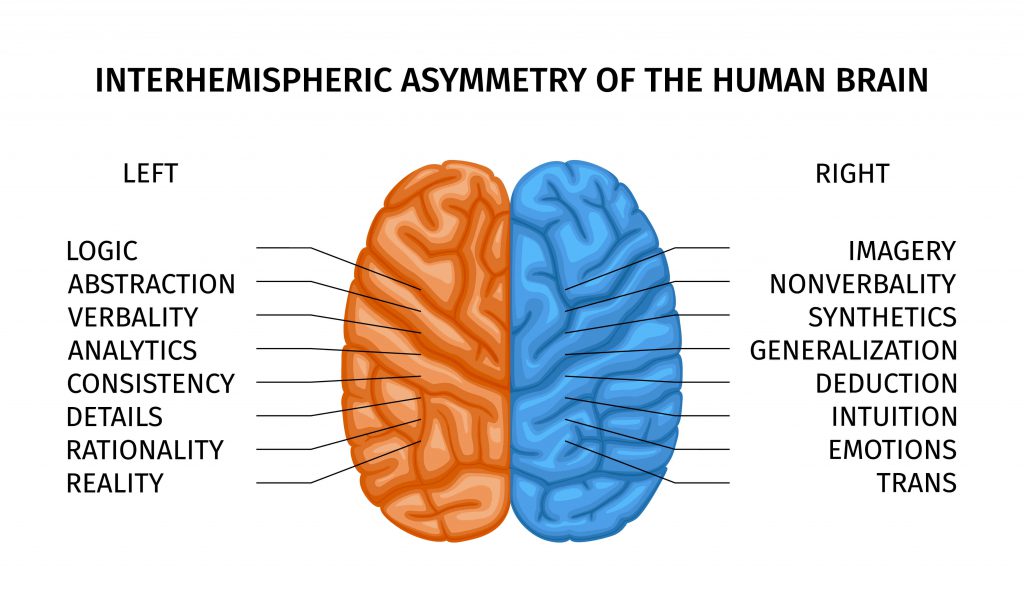Varieties of Deception
Deception, a cornerstone of human interaction, manifests in a spectrum of forms, each with its own intricacies and consequences. While often cast in a negative light, its presence is woven into the fabric of our social lives, from the subtle white lie to the elaborate con. Understanding these varieties allows for a more nuanced approach to navigating the social landscape and safeguarding against manipulation.
- Omission and Concealment: The Silent Deceivers
Omission, a subtle yet potent form of deception, involves the strategic withholding of information. It’s not necessarily a direct lie, but it creates a skewed perception by preventing the recipient from forming a complete and accurate understanding. Consider a job applicant who highlights their strengths while omitting any mention of past employment gaps or performance issues. This selective presentation of information paints an incomplete picture, potentially leading the employer to make a decision based on a distorted reality.
Time to feel better. Find a mental, physical health expert that works for you.
Concealment, a more active form of withholding, involves deliberately hiding information, often through physical means or strategic silence. This could involve suppressing evidence, burying unfavorable data in a report, or simply avoiding direct questions. For instance, a politician might conceal their financial ties to a controversial industry, or a student might hide a failing grade from their parents. The act of concealment actively prevents the truth from coming to light, often with the intention of maintaining a false narrative.
- Distortion and Misrepresentation: Twisting the Truth
Distortion involves altering the truth, often by exaggerating, minimizing, or twisting facts to fit a desired narrative. A salesperson might exaggerate the benefits of a product while minimizing its drawbacks, or a news outlet might selectively present data to support a particular political agenda. This manipulation of information creates a distorted reality, leading the recipient to make decisions based on a skewed perception.
Misrepresentation, a more direct form of distortion, involves creating a false impression through misleading language, selective presentation of data, or the construction of a false narrative. For example, a company might use carefully chosen statistics to make their product appear more effective than it is, or a politician might craft a narrative that paints their opponent in a negative light. This deliberate act of misrepresentation aims to deceive the recipient by presenting a false version of reality.
- Falsification and Fabrication: Creating False Realities
Falsification is the act of creating false information or evidence, often for fraudulent purposes. This could involve forging documents, creating fake testimonials, or inventing stories to support a false claim. For example, a student might forge a doctor’s note to excuse an absence, or a con artist might create fake credentials to gain someone’s trust.
Fabrication, a more elaborate form of falsification, involves constructing an entirely false reality. This could involve creating a false identity, staging a fake event, or inventing a complex lie to deceive others. This level of deception often requires meticulous planning and execution, and can have devastating consequences for the victims.
- White Lies and Social Deception: The Social Lubricants
Not all deception is malicious. White lies, often considered harmless, are used to avoid hurting feelings, maintain social harmony, or navigate awkward situations. For example, telling someone their cooking is delicious when it’s not, or complimenting someone’s outfit even if you don’t particularly like it. These small acts of deception help to maintain social cohesion and avoid unnecessary conflict.
Social deception, a broader category, encompasses any form of deception used to manage social interactions. This could involve exaggerating one’s accomplishments to impress others, downplaying one’s flaws to avoid judgment, or using flattery to gain favor. These social maneuvers are often subtle and ingrained in our interactions, shaping how we present ourselves to the world.
- Manipulation and Influence: The Art of Control
Manipulation involves using deception to control or influence another person’s behavior, often for selfish purposes. This could involve playing on someone’s emotions, exploiting their vulnerabilities, or using psychological tactics to gain compliance. For example, a manipulative partner might use guilt or emotional blackmail to control their partner’s actions.
Influence, a related concept, involves subtly guiding someone’s decisions without their conscious awareness. This could involve framing information in a certain way, using persuasive language, or creating a sense of urgency to sway their choices. Advertisers, for instance, often use subtle psychological techniques to influence consumer behavior.
- Impersonation and Identity Theft: Stealing Identities
Impersonation involves assuming another person’s identity, often for fraudulent purposes. This could involve creating fake social media profiles, posing as a customer service representative, or impersonating a government official.
Identity theft, a specific form of impersonation, involves stealing someone’s personal information, such as credit card numbers, social security numbers, or passwords, to commit fraud. This can have devastating financial and emotional consequences for the victims. With the rise of digital technology, digital impersonation and identity theft are becoming increasingly prevalent, posing new challenges for security and privacy.
- Self-Deception: The Internal Lies
Deception isn’t always directed at others; it can also be directed at oneself. Self-deception involves lying to oneself, often to protect one’s ego, maintain a positive self-image, or avoid facing uncomfortable truths. This could involve denying one’s flaws, rationalizing one’s actions, or believing in false beliefs that support one’s desired narrative.
Self-deception can have a significant impact on mental health and decision-making, as it can lead to distorted perceptions of reality and hinder personal growth. Recognizing and addressing self-deception is crucial for developing self-awareness and making sound judgments.
- Strategic Deception in Games and Warfare: The Art of Misdirection
Deception plays a crucial role in games and warfare, where it’s used to gain a strategic advantage. In poker, bluffing is a form of strategic deception used to mislead opponents about the strength of one’s hand. In military strategy, deception is used to create false impressions, confuse enemies, and gain a tactical advantage. This involves creating decoys, spreading disinformation, and using camouflage to mislead the enemy.
Strategic deception requires careful planning, execution, and an understanding of the opponent’s psychology. It’s a delicate balance between creating a convincing illusion and avoiding detection.
Connect Free. Improve your mental and physical health with a professional near you

Detection of Deception
Detecting deception is a complex and challenging endeavor, requiring a keen understanding of human behavior and a critical eye. While there’s no foolproof method, a combination of psychological insights and behavioral observations can significantly improve accuracy.
- Behavioral Cues: The Subtle Signals
- Nonverbal Indicators: Changes in body language, such as fidgeting, avoiding eye contact, shifting posture, and increased blinking, can indicate discomfort and potential deception. However, these cues are not definitive, as nervousness can stem from other factors, such as anxiety or stress. It is important to establish a baseline of normal behavior and look for deviations.
- Verbal Indicators: Inconsistencies in stories, changes in tone, evasive language, and long pauses can raise red flags. Liars often provide vague answers, avoid direct questions, or use defensive language. Paying attention to the details of their story and how it is told can reveal inconsistencies.
- Microexpressions: Brief, involuntary facial expressions that reveal underlying emotions can provide valuable insights into hidden feelings. These fleeting expressions, often lasting only fractions of a second, can betray emotions that the person is trying to conceal.
- Physiological Responses: Increased heart rate, sweating, rapid breathing, and pupil dilation can indicate stress and anxiety, which may be associated with lying. However, these responses can also be triggered by other factors, such as fear or excitement.
- Psychological Cues: The Mental Footprints
- Cognitive Load: Lying requires more cognitive effort than telling the truth. Liars may exhibit signs of mental strain, such as pauses, hesitations, changes in speech patterns, and difficulty recalling details. Monitoring their cognitive load can help detect signs of deception.
- Emotional Responses: Liars may experience guilt, fear, or anxiety, which can manifest in their behavior. They may also display defensive or aggressive behavior when confronted or questioned. Understanding their emotional state can provide insights into their potential deception.
- Inconsistency and Contradiction: Liars often struggle to maintain consistency in their stories. Inconsistencies and contradictions can reveal underlying deception. Carefully analyzing their statements and comparing them to known facts can uncover discrepancies.
- Lack of Detail: Liars may provide vague or incomplete answers, as they may not have a clear mental image of the fabricated events. Probing for details and challenging their story can reveal inconsistencies and gaps in their narrative.
- Techniques for Detecting Deception: The Tools of Truth
- Strategic Questioning: Asking open-ended questions, probing for details, challenging inconsistencies, and using surprise questions can help uncover deception. Tailoring questions to the specific situation and using a combination of direct and indirect questions can be effective.
- Analyzing Statements: Examining the language used, identifying inconsistencies, and comparing statements to known facts can reveal discrepancies. Using forensic linguistics and statement analysis techniques can provide insights into the veracity of their statements.
- Monitoring Nonverbal Behavior: Observing body language, facial expressions, and vocal cues can provide insights into underlying emotions. Paying attention to subtle changes in their behavior and comparing them to their baseline behavior can reveal signs of deception.
- Using Technology: Polygraph tests, while controversial, measure physiological responses associated with lying. Facial recognition software and voice analysis tools are being developed to detect deception. However, these technologies should be used with caution and ethical considerations.
- Baseline Behavior: Establishing a baseline of normal behavior is crucial for detecting deviations that may indicate deception. Observing the person’s behavior in non-stressful situations and comparing it to their behavior during questioning can reveal changes that suggest deception.
- Limitations and Ethical Considerations: The Boundaries of Truth
- Cultural Differences: Nonverbal cues can vary across cultures, making it essential to consider cultural context when interpreting behavior. Understanding cultural norms and differences in communication styles is crucial for accurate deception detection.
- Individual Differences: Not everyone exhibits the same cues when lying. Some individuals are better at concealing their emotions than others. Considering individual differences in personality and communication styles is important for avoiding false positives.
- False Positives: Relying solely on behavioral cues can lead to false accusations. It’s crucial to consider multiple factors, gather corroborating evidence, and avoid drawing conclusions based on single indicators.
- Ethical Concerns: Using deception detection techniques raises ethical concerns, particularly in legal and employment contexts. It’s essential to ensure that such techniques are used responsibly, ethically, and with respect for individual rights and privacy.
Motivations for Deception
People engage in deception for a myriad of reasons, ranging from the instinctual drive for self-preservation to the calculated pursuit of power and control. Understanding these motivations is crucial for navigating the complexities of human interaction and addressing deceptive behavior effectively.
- Self-Preservation and Protection: The Instinctual Lies
- Avoiding Punishment: People may lie to avoid consequences, such as punishment, criticism, or social disapproval. This is a fundamental motivation, driven by the desire to protect oneself from harm or negative outcomes.
- Protecting Self-Esteem: Lying can be used to maintain a positive self-image or avoid embarrassment. People may exaggerate their accomplishments, downplay their flaws, or create false narratives to protect their ego.
- Escaping Unpleasant Situations: People may lie to avoid uncomfortable conversations, social obligations, or difficult situations. This is a form of avoidance behavior, driven by the desire to minimize discomfort or stress.
- Safety and Security: In dangerous situations, lying can be used to protect oneself or others from harm. This is a survival instinct, driven by the need to ensure safety and security in the face of threats.
- Social and Relational Motivations: The Social Fabric
- Maintaining Social Harmony: White lies are often used to avoid hurting feelings or maintain social relationships. These small acts of deception help to preserve social cohesion and avoid unnecessary conflict.
- Gaining Social Approval: People may exaggerate their accomplishments or downplay their flaws to impress others and gain social approval. This is a form of social climbing, driven by the desire to be accepted and admired by others.
- Managing Impressions: Lying can be used to create a desired impression or influence how others perceive them. This is a form of impression management, driven by the desire to control how others view them.

Free consultations. Connect free with local health professionals near you.
Conclusion
The exploration of deception, across its diverse varieties, methods of detection, and underlying motivations, reveals a complex and deeply ingrained aspect of human interaction. It’s a landscape where truth and falsehood intertwine, where intentions range from benevolent social lubrication to calculated manipulation. As we conclude this examination, it’s crucial to acknowledge the multifaceted nature of deception and its profound impact on our lives.
The sheer breadth of deceptive practices, from subtle omissions to elaborate fabrications, underscores the adaptability and ingenuity of the human mind. Understanding these varieties is not merely an academic exercise; it’s a practical necessity for navigating the intricate web of social relationships. By recognizing the subtle cues of concealment or the overt distortions of misrepresentation, we equip ourselves with the tools to discern truth from falsehood.
However, the detection of deception is far from a straightforward science. While behavioral and psychological cues offer valuable insights, they are not infallible indicators. The complexity of human behavior, coupled with cultural variations and individual differences, necessitates a nuanced approach. Relying solely on nonverbal signals or physiological responses can lead to misinterpretations and ethical dilemmas. The pursuit of truth requires a combination of critical thinking, strategic questioning, and a deep understanding of context.
Moreover, the motivations behind deception are as diverse as the deceptions themselves. Self-preservation, social maneuvering, material gain, and psychological impulses all contribute to the tapestry of deceptive behavior. While some lies stem from a desire to protect oneself or others, others are driven by darker intentions, such as manipulation or exploitation. Recognizing these motivations is crucial for addressing deceptive behavior effectively and fostering trust in our interactions.
In a world increasingly saturated with information and complex social dynamics, the ability to discern truth from falsehood is paramount. The proliferation of digital technologies, while offering numerous benefits, also presents new avenues for deception, from deep fakes to sophisticated online scams. This underscores the need for heightened vigilance and critical thinking in the digital age.
Ultimately, navigating the labyrinth of deception requires a balanced perspective. While skepticism and caution are essential, it’s equally important to avoid cynicism and maintain a degree of trust in our interactions. Human relationships thrive on honesty and transparency, and fostering an environment of trust is crucial for building strong communities.
The exploration of deception should not lead to a state of perpetual suspicion, but rather to a deeper understanding of human nature. By acknowledging the complexities of deception, we can develop strategies to mitigate its negative impact and promote honesty in our interactions. This includes cultivating critical thinking skills, fostering open communication, and establishing ethical guidelines for information sharing.
In conclusion, deception is an inherent part of the human experience, a reflection of our complex motivations and social dynamics. By understanding its varieties, detection, and motivations, we can navigate this intricate landscape with greater clarity and discernment, fostering a world where truth and trust prevail.
Time to feel better. Find a mental, physical health expert that works for you.
Common FAQs
What is the difference between lying and deception?
Lying is a specific form of deception that involves making false statements. Deception is a broader term encompassing any act or strategy intended to mislead, including lying, omission, and manipulation.
Are all lies harmful?
What are some common signs that someone might be lying?
Common signs include inconsistencies in stories, changes in body language (e.g., fidgeting, avoiding eye contact), and shifts in speech patterns. However, these are not foolproof indicators.
Can technology accurately detect lies?
Technologies like polygraph tests and facial recognition software are used to detect deception, but their accuracy is debated. They should be used with caution, and their results should be considered alongside other evidence.
Why do people lie?
People lie for various reasons, including self-preservation, social gain, material advantage, and psychological motivations.
Is it possible to completely eliminate deception from our lives?
No, deception is a complex part of human interaction. However, we can strive to promote honesty and transparency in our relationships.
How can I protect myself from being deceived?
Cultivate critical thinking skills, be aware of common deceptive tactics, and verify information from multiple sources.
What is "self-deception," and why do people do it?
Are there cultural differences in how deception is perceived and practiced?
Yes, cultural norms significantly influence how deception is viewed and used. What is considered acceptable in one culture may be highly offensive in another.
What are the ethical considerations surrounding deception?
How does the internet and social media affect deception?
The internet and social media have created new avenues for deception, such as online scams, fake news, and identity theft. This makes it even more important to be vigilant and critical of online information.
People also ask
Q: What is an example of deception?
A: Example: A friend invited you to their dinner party and asks how you liked their casserole dish. You thought it was disgusting but your respond with a dodge, saying, “Wow! I’ve never tasted anything like that before,” deceptively implying you enjoyed your meal without actually saying anything untrue.
Q: What is deception in psychology?
Q: Is deception the same as lying?
Q: What is deception called?
A: Some common synonyms of deception are double-dealing, fraud, subterfuge, and trickery. While all these words mean “the acts or practices of one who deliberately deceives,” deception may or may not imply blameworthiness, since it may suggest cheating or merely tactical resource.
NOTICE TO USERS
MindBodyToday is not intended to be a substitute for professional advice, diagnosis, medical treatment, or therapy. Always seek the advice of your physician or qualified mental health provider with any questions you may have regarding any mental health symptom or medical condition. Never disregard professional psychological or medical advice nor delay in seeking professional advice or treatment because of something you have read on MindBodyToday.
Share this article

Let us know about your needs

Quickly reach the right healthcare Pro

Message health care pros and get the help you need.
Popular Healthcare Professionals Near You
You might also like
What is Learned Helplessness?
, What is Learned Helplessness? Everything you need to know Find a Pro Expanding on Learned Helplessness Learned helplessness, as […]
What is Left Brain – Right…
, What is Left Brain – Right Brain? Everything you need to know Find a Pro Brain Hemispheric Collaboration The […]
What is Loneliness?
, What is Loneliness? Everything you need to know Find a Pro Loneliness: Prevention and Health Impacts Loneliness, a deeply […]





